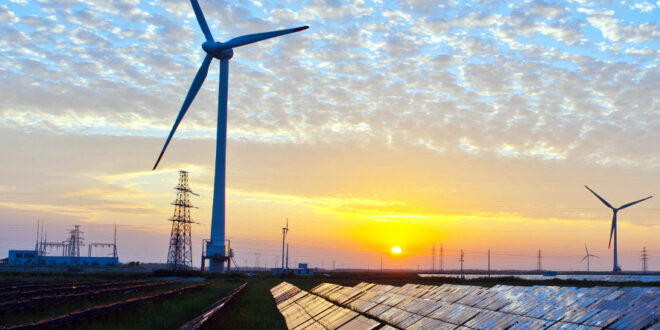Renewable energy is on a massive growth trend. Solar and wind installation rates are soaring and EV sales continue to balloon as technology advances, prices become more competitive, governments get serious about supporting the clean energy transition, and all kinds of geopolitical stars have aligned. While more renewable energy is a net positive for the planet, there are some significant ecological trade-offs associated with the fast-growing industry. Perhaps the greatest of these is the significant amount of waste it generates as components like lithium-ion batteries, solar panels, and wind turbines end their life cycles.
These products contain lots of materials that pose significant hazards to the environment, including toxic metals, oil, and fiberglass, among others. In the words of Environmental Protection Agency (EPA) Administrator Andrew Wheeler, “without a strategy for their end-of-life management, so-called green technologies like solar panels, electric vehicle batteries, and windmills will ultimately place the same unintended burdens on our planet and economy as traditional commodities.”
A narrow focus on rapid growth has obscured the need to adequately plan for these downstream waste production issues. While some critics and environmentalists have been trying to call attention to this issue for years now, actual interest has waxed and waned without gaining a major foothold. Back in 2021, the question of what we were going to do with all that waste garnered a whole lot of headlines. But now, in 2023, the topic has all but disappeared from the clean energy discourse. Is that because it’s less of an issue now than it was just a few years ago? Decidedly not.
In fact, the issue is only growing along with the renewables industry. While there is also a growing acknowledgment that robust recycling and waste management programs will be a necessary part of a safe, effective, and environmentally friendly renewable energy industry, not enough investment and attention has been directed to actually solving the problem. At present, nearly 100% of solar panels end up in landfills. By just 2030, the number of discarded solar panels will already have amounted to cover an area “equivalent to about 3,000 football fields,” CBS News recently reported. Meanwhile, waste from wind turbines is expected to amount to 47 million tons of blade waste each year by 2050.
This doesn’t just represent an environmental loss; it’s also a missed economic opportunity. Discarded renewable energy components like solar panels include valuable and finite materials which can be recycled and reused. With all the angst about sufficient lithium, cobalt, and other rare earth minerals to supply the renewable energy revolution, recycling seems like it should be an absolute no-brainer. It’s a rare economic and environmental win-win. So what’s the hold-up?
Put simply, the recycling industry is still extremely small, and lacks the economies of scale to become cost-competitive with the alternative of simply chucking used renewable materials into the landfill. Investment in research and development to continue improving recycling technologies, as well as financial and policy support for scaling, will be essential. Plus, even if throwing these parts away remains the cheaper option up front, when environmental externalities are included in the equation the economics clearly favor a long-term recycling solution.
“It is vital that we adequately plan, prepare, and design renewable energy systems for reuse, recycling, and proper end-of-life material management in the present, or we risk creating new environmental and economic burdens in the future,” said Assistant Administrator for the U.S. Office of Land and Emergency Management Peter Wright in an EPA press release.

 Iran Energy News Oil, Gas, Petrochemical and Energy Field Specialized Channel
Iran Energy News Oil, Gas, Petrochemical and Energy Field Specialized Channel



